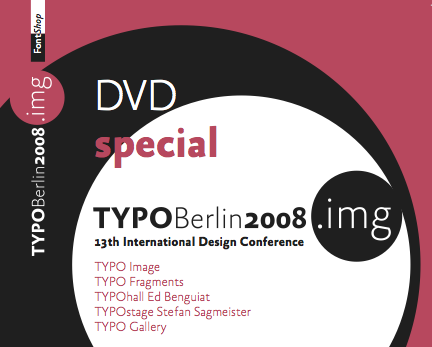Born in Brooklyn, NYC, Edward Benguiat got acquainted with design and showcard lettering when he was nine years old. His daddy was display director of a large NY department store and had all the drawing tools a little boy could want. Ed would play with his father’s pens, brushes, and drafting sets, and learned about sign painting, showcard and speedball lettering.
During World War II, he wasn’t old enough to enter the armed service, so with a forged photostat of his birth certificate, he enlisted in the army. After his stint in the Air Corps he traded his airplane control stick for drumsticks and continued the jazz percussionist career he had started before the war.
Ed became established as a talented progressive jazz musician under the name Eddie Benart, and played with numerous big bands of that era, but preferred the New York gigs, playing with Bop groups on New York’s 52nd (Jazz) Street: »It kept me in town; going on the road with big bands was a drag, and tough.« During that time, a Metronome and Downbeat magazine poll picked Ed as the number three sideman/drummer in America.
Almost forty years ago Silas Rhodes, President and founder of the School of Visual Arts, gave Ed a job as a teacher. He compares graphic design and typography to the rhythm and balance of a musical composition.
While playing on the »street«, Ed enrolled at the Workshop School of Advertising Art. He wanted to draw nudes like some of the well-known illustrators. Since he was not good at drawing, the school advised him to quit. His first job as an illustrator was as a cleavage retoucher for a movie magazine. »You may think I was adding to the boobs. No way! I was taking the cleavage away,« he said, indicating the reaction of the motion picture industry to the crackdown on obscenity in movies in those days. It was obvious that Ed couldn’t draw too well, so he went in the direction of layout, design, typography, and calligraphy. He became calligrapher Paul Standard’s prodigy. Once out of school, Ed established an impressive career as a designer and art director at a number of large and small publishing houses, studios, and ad agencies. He started his own company, which failed. »Wow! Photo-Lettering Inc. and Ed Ronthaler saved me financially by paying all my debts and making me art director. Of course I had to pay them back.«
One way or another, just about everyone in the graphic community has had some contact with Ed. He’s a neighborhood guy. Admittedly, most know him as the guy who sat in his cramped, cluttered office on 45th Street that had just enough room to swing his pen, brush and maybe his old drum sticks around.
Benguiat’s impact on the type community involves more than just design. He played a critical role in establishing the International Typeface Corporation, the first independent licensing company for type designers. Ed jump-started the type industry in the late ’60s and early ’70s. Founded in 1971 by Herb Lubalin, Aaron Burns, and Ed Ronthaler, ITC was formed to market type to the industry. Lubalin and Burns contacted Benguiat, whose first ITC project was working on Souvenir. Originally a single-weight face designed by Morris Fuller Benton in the 1920s, Benguiat redrew it with additional weights and italics. Now, Souvenir is the face everybody loves to hate. It was lTC’s best seller, and Ed did a beautiful job. It’s not his fault it's become a cliché.
Ed became a partner with Lubalin in the development of U&lc, lTC’s award-winning magazine. »Ed can draw the ass off anyone.« So he quickly created new ITC typefaces such as Bauhaus, Tiffany, Benguiat, Benguiat Gothic, Korinna, Panache, Modern No. 216, Bookman, Caslon No. 225, Barcelona, Avant Garde Condensed, and many more. This added to the more than 400 faces he’d already created for Photo-Lettering.
Ed eventually became vice president of ITC until its sale to Esselte Ltd. Ed’s most recent face is Edwardian Script. He is also known for his designs or redesigns of the logotypes for Esquire, the New York Times, Coke, McCall’s, Ford, Reader’s Digest, Photography, Look, Sports Illustrated, The Star Ledger, The San Diego Tribune, AT&T, A&E, Estee Lauder, ...the list goes on and on. You name it, he’s done it.
He laments that student designers show more interest in learning the computer than mastering the art of designing letterforms: »Too many new designers substitute technology for talent, thinking they’ve got a Mac and now they can draw a logo or a typeface. You have to learn to draw first. The computer won't do it for you.«
Professor Benguiat is a member of the Alliance Graphique Internationale and a past president of the Type Directors Club. In 1990, he received the gold medal for excellence from the New York Type Directors Club, and won the prestigious Fredric W. Goudy Award. He is in the Art Directors »Hall of Fame«.
Benguiat continues a busy lecture and exhibit circuit that takes him to Paris, Berlin, Brazil, Slovenia, London, Chicago, Washington, and New York, where he is an instructor at the School of Visual Arts. In 1995, SVA honored him with Teacher of the Year.























Steffan|November 20, 2008
Sind wieder einige Exemplare für – sagen wir »sonstige Interessierte« – zu bekommen?
Benno|November 24, 2008
@Steffan: Ja, wir haben genügend Exemplare pressen lassen. Es wird hier im Blog bekannt gegeben, wie man diese DVD bekommen kann.